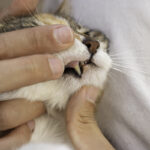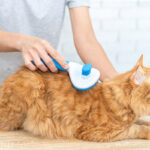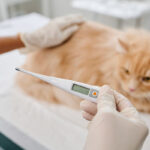Ringworm is one of the most commonly seen skin infections in cats which has nothing to do with worms. Though this skin disease is named ringworm, it is a fungal skin condition caused by some fungi.
One of the major skin conditions that pet parents don’t wish to listen to and think about is Ringworm disease. The important thing is that Ringworm is a contagious disease that can spread easily to fellow pets and even humans residing in the household.
Though Ringworm is a treatable fungal infection, it is very difficult to cure thoroughly. Below, we’ve covered everything about Ringworm In Cats, what to look out for if you are worried about your cat having ringworm, symptoms, causes, diagnosis, treatment, recovery, and more.
Contents
- What is Ringworm?
- How Do Ringworms Look Like?
- How Can I Tell My Cat Is Having Ringworm?
- How Are Cats Infected By Ringworm?
- Symptoms Of Ringworms In Cat
- Is It Difficult To Identify Ringworms In Cats?
- Diagnosing Ringworms In Cat
- Microscopic Examination
- Ringworm Treatment For Cats
- How Long Does My Cat Stay Contagious?
- Can My Cat Completely Recover From Ringworm Infection?
- How To Stop Ringworm From Spreading Further?
- FAQs on Ringworm Infection in Cats
- Conclusion
What is Ringworm?
Ringworm is a contagious fungal infection that majorly affects the skin, nails, and hair of felines. Ringworm is not only infected in cats but also several other species of animals. Ringworm is otherwise referred to as ‘Dermatophytosis’.
In the case of cats, we can witness the majority of ringworm cases are caused by a fungus namely ‘Microsporum Canis.’ This fungus is transmitted very easily to other animals and humans as well.
Usually, this kind of fungi survives on keratin present in the skin, fur, and nails of the cat. Though Ringworm infection may not be a life-threatening disease in cats, it is highly important to treat it completely as it is an extremely contagious infection that can spread easily to pets and people residing under one roof.
How Do Ringworms Look Like?
Ringworm is a contagious skin infection that looks like a red-colored ring-shaped rash on the outer layers of the skin. We can witness this type of rash on the skin, nails, face, fur, feet of the cat, tips of the ears, etc. As the infection appears in the shape of a ring, this skin infection is called Ringworm. In general, we can see this infection in different areas of hair, skin, feet, etc.
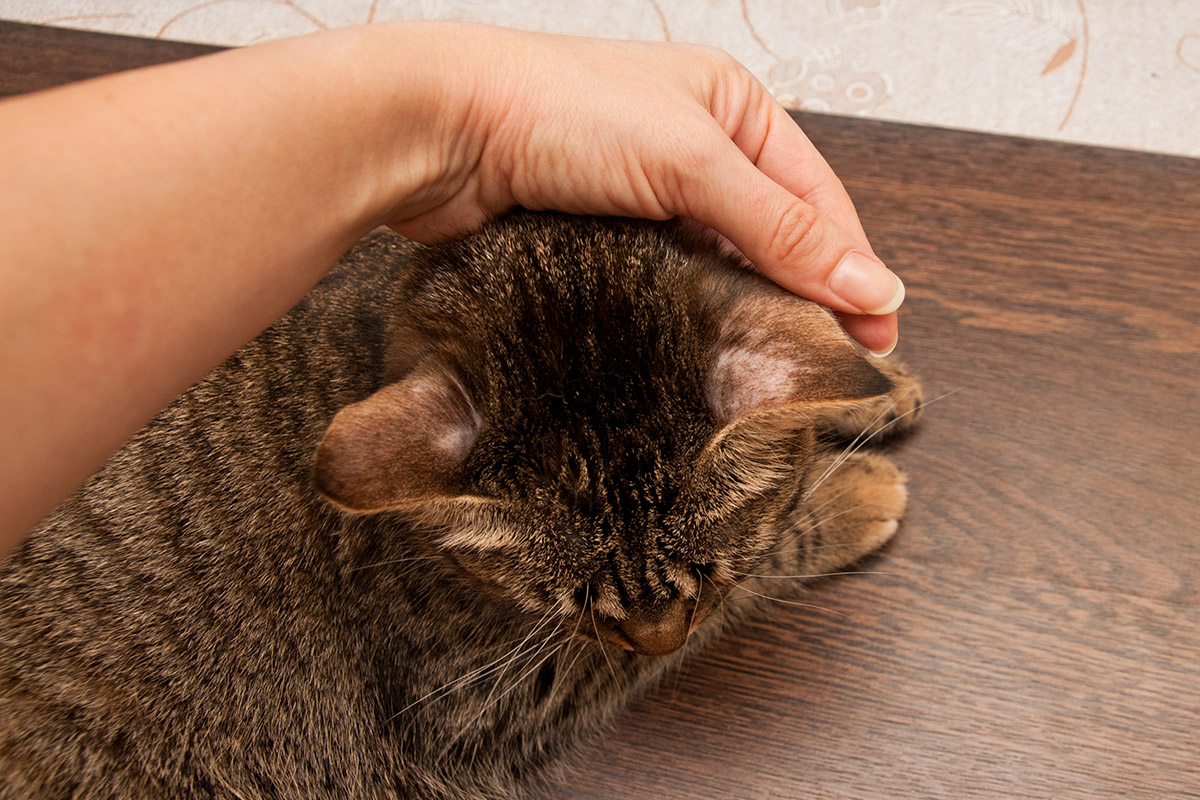
Cat Ringworm is slightly difficult to trace this infection in cats as the affected region is pretty mild and invisible. In some felines, we can see round-shaped thick patches of skin associated with hair loss.
In rare cases, we can witness ringworm infection caused by the claws of cats. When a cat is attacked by the ringworm infection in the claw region, they become rough and turns out to become distorted.
How Can I Tell My Cat Is Having Ringworm?
Wondering whether your cat has having Ringworm infection or not? Through specific signs and symptoms, you can tell your cat is having ringworm. Despite cat ringworm displaying mild symptoms, you can still be able to discover this infection in your feline.
If you find severe loss of hair in your cat, intense grooming, and round sores on your cat’s skin then, you can suspect ringworm in your feline. Mostly, ringworm has similar symptoms just like various skin conditions and infections.
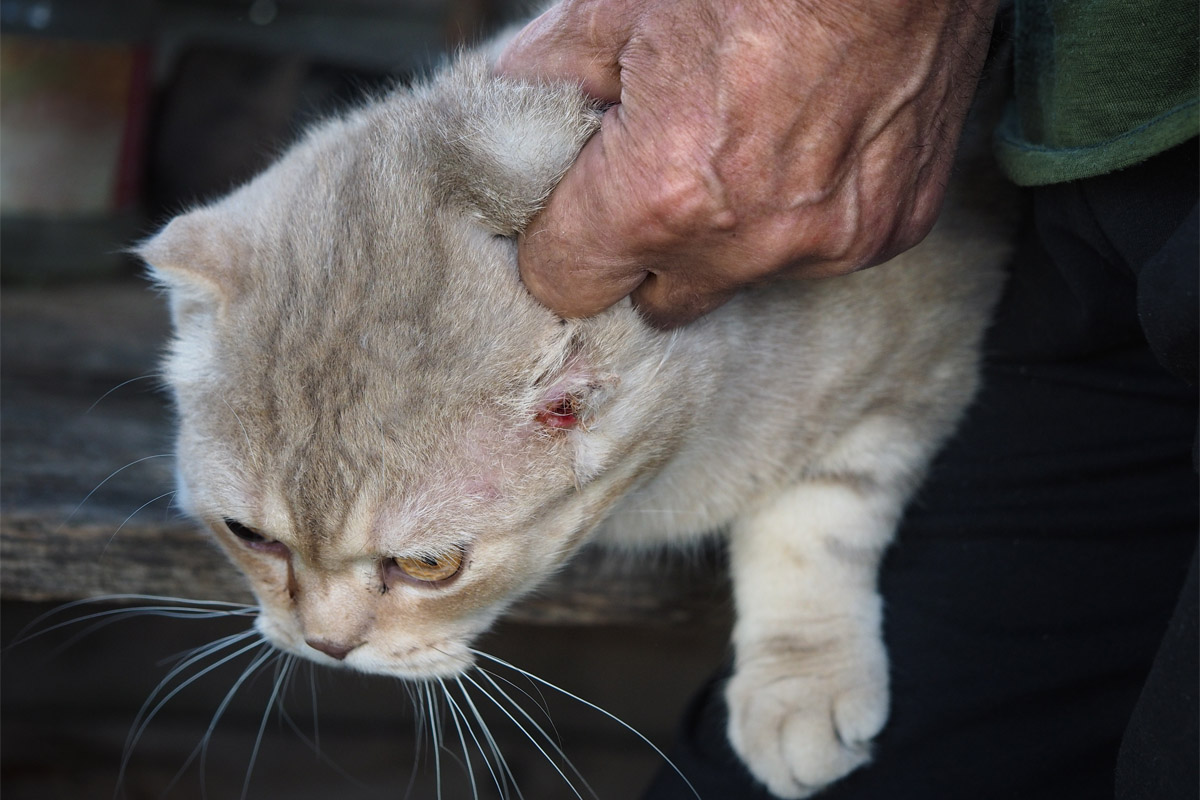
The major signs that tell your cat has ringworm include skin inflammation, brittleness of hair, dandruff, loss of hair patches, skin redness, and more. All these signs indicate that your cat is having a ringworm infection.
How Are Cats Infected By Ringworm?
How Do Cats Get Ringworm? Cats are usually infected by ringworm through various forms. Your furry friend may get affected by this skin condition due to climatic changes, and other factors like age, nutritional problems, health issues, associated with the infected pets, and more.
The spore of the fungus will be very hard and can survive for a long time on any object. The ringworm fungus spores can remain dormant on a variety of objects such as furniture, food bowls, bedding, carpet, etc., for almost 18 months.
When your pet cat contact with a fungal spore causing ringworm infection, it easily gets infected. However, if your cat’s skin is already open or infected beforehand, the fungus spore easily infects the lesion. The ringworm fungus can’t easily infect a cat with healthy and impaired skin.
Ringworm infection is most commonly seen in kittens under 12 months of age. The reason behind the cause of ringworm in kittens is because of their poor immunity power.
There are copious factors behind the cause of a feline contract ringworm. We have explained the potential ways through which your cat may get infected by ringworm skin conditions. Check it out!
1. Health Issues
Even if your cat is an adult but doesn’t have a healthy immune system can easily get affected by the ringworm infection. If your feline’s immune system is suppressed, it has the high jeopardy of ringworm infection. However, we can witness this sort of immune suppression most often in humans rather than felines.
2. Poor Nutrition
When cats consume food with poor nutritional values, such cats are at a high risk of getting this infection from other infected animals and nature as well. Even, the cats that reside in a highly populated area are risky to this contagious infection. As the nature of this fungus type is highly resistant, they easily infect the cats with poor nutrition.
3. Age
Another major factor behind the cause of ringworm in cats is the age of the feline. Cats during their kitten phase are highly contagious to ringworm infection. Kittens below 1 year are highly affected by ringworm because of their weak immune system.
Also, the long-haired cat breeds are easily susceptible to ringworm infection. The reason is that the spores may get ambushed in the cat’s longer coats and are extremely tough to remove. Kittens as well as geriatric felines that have weak immune systems are at an extreme risk for the attack of ringworm infection.
4. Sitting / Sleeping Next To Infected Pets
Mostly, pet cats or indoor cats are easily affected by ringworm infection especially when they interact with infected pets or humans. As mentioned earlier, ringworm is a highly contagious infection that can spread easily among one another.
Whenever your cat sits or sleeps next to an infected cat or eats in the same bowl as an infected feline or a dog, your cat will get easily infected by ringworm.
Although your cat isn’t in contact with the infected pets or animals, your cat may easily get the ringworm infection through infected soil. Apart from soil, your cat can even get a ringworm infection through various contaminated objects like furniture, toys, dishes, etc., in the household.
5. Climatic Change
Sometimes, the climatic conditions wherein the cats reside may become another factor for ringworm infection. Felines that usually reside in highly humid climatic conditions and warmer locations are at a higher risk for ringworm infection. Also, the outdoor cats or free-roaming felines probably get infected by the fungal spores present in the surroundings.
Symptoms Of Ringworms In Cat
Ringworm in cats is pretty much difficult to identify as this infection is asymptomatic. To figure out the Ringworm In Cats’ Symptoms, just go through this in-depth article. Detecting cat ringworm is extremely difficult as the symptoms of ringworm in cats are mild and undetectable.
In some other cases, you may witness some symptoms of ringworm in cats like hair loss, sore patches, dandruff, etc. Whenever you witness a circular red rash on the skin of your cat, you may assume it to be a ringworm infection. Unfortunately, most pet parents detect that the cat has ringworm until the symptoms develop into major problems like patchy hair loss, scaling, infected nails, etc.
Take a look at the Ringworm In Cats Symptoms that can be witnessed in felines.
1. Hair Loss And Changes In Hair Color
One of the major symptoms of ringworm in cats includes hair loss and brittle or broken hair in felines. Sometimes, ringworm infection may lead to a change in the hair color of the cat. Whenever you witness a loss of hair in a circular pattern, it appears like a ringworm in cats.
Apart from the circular patterns of hair loss, the ringworm infection also causes improper hair loss patches throughout the cat’s body. Hair Loss patches can be seen in various parts of the body such as the skin, hair, fur, feet, ears, etc.
The healthy, glossy, and lustrous fur coat of the cat gradually loses its shine and leads to total damage of hair in the cat. This is the key symptom of ringworm in cats. As this symptom enters into the next stage, it could lead to discoloration of hair and roughness.
2. Nail Infection
Another symptom of ringworm infection in cats is deformed or infected nails. If in case, the ringworm infection affects nails, it leads to a rough appearance of the nails. As a result, the infected nails of the cat appear flaky and misshaped.
3. Lesions On Few Areas
Apart from the round-shaped red rings, we can also witness abnormally formed lesions throughout the cat’s body. The major areas wherein we can find lesions in the cat’s body include the head, front legs, chest, backside of the body, and more.
When the ringworm infection is extremely complicated, felines can have comparatively big lesions. Sometimes, the red rings turn out to become open sores on the cat’s body. Such lesions may not be itchy all the time but they turn out to become itchy when there is a bacterial infection and scaling on the feline’s body.
4. Frequent Grooming
Excessive Grooming is another major symptom of ringworm infection in cats. Due to rapid hair loss and skin damage, the affected areas may cause itchy sensations in cats. Sometimes, these areas may become painful. As a result, the cat starts grooming frequently, especially in the affected areas.
However, all the lesions and round-shaped ring rashes may not be itchy in cats. Only in a few cases, the cats may experience itchiness in certain areas where there are bumps and lesions on the body of the cat.
5. Dandruff
If you find your cat’s hair with a lot of dandruff, it could be an indication of ringworm infection. Due to excessive hair loss, the skin turns out to become scaly, dry, and flaky. You can find dandruff all over the body of the cat. While itching or scratching their skin, dandruff starts falling off of the cat’s body.
6. Some Cats Are Asymptomatic
Some felines affected by the ringworm infection may be asymptomatic. There could be various reasons behind the asymptomatic nature of specific cats. When a cat is affected by the initial contraction of the fungus caused within 2 weeks then, it will be pretty much early to display symptoms of this infection.
In another case, it’s the fault of the cats i.e., few cats are asymptomatic carriers. It indicates that such cats don’t show any kind of symptoms of ringworm infection until it is spread to other animals or humans in the household.
Another reason is that if your cat is long-haired, it’s difficult to spot the hair loss patches in your cat even if it is infected by the ringworm. The round sores and lesions may not be spotted easily in long-haired felines.
Is It Difficult To Identify Ringworms In Cats?
It can be slightly arduous to determine if your cat has ringworm infection as the ringworm-affected regions are mild and subtle. In some cases, ringworms may cause a much more familiar part of the body like hair loss in patches.
In addition, long-haired cats are easily susceptible to contracting ringworm sans any standard symptoms. Long-haired cats may get affected by ringworm without displaying any sort of ringworm symptoms. Such cats are known as asymptomatic carriers.
They can easily infect ringworm infection to other pets like dogs, cats, and even humans in the household. These felines don’t appear as if they’re ill or sick. But, these cats are extremely contagious to other people and animals. By giving proper Ringworm Treatment For Cats, you can cure this infection.
Diagnosing Ringworms In Cat
To diagnose ringworm in cats, the veterinarians perform a plethora of tests. Through certain medical tests, the vet will confirm that the cat has ringworm infection. While few tests are highly accurate, some other medical tests will be able to give a hint that the cat has contracted ringworm.
Before conducting any sort of medical tests, the vet will perform a thorough physical examination of the cat to spot bald patches, hair loss patches, and scaly and crusty patterns on the cat’s skin or fur.
Mostly, ringworms in felines may appear similar to other skin conditions like bacterial infections, allergies, etc. A variety of fungi species can cause ringworm in cats. Go through the list of diagnosing procedures or medical tests performed on the cat to detect ringworm in cats. Have a glimpse!
Microscopic Examination
Once you take the cat to a vet, he/she will check for fungal spores on the body of the cat under a microscope. For this examination, a tiny piece of transparent tape is placed on the lesion that will pick up the cells. The clear tape will be stained with the fungus spores.
When this tape is placed under the microscope, a unique purple stain turns the ringworm spores to appear like tiny ellipses with lines. Still, the spores are very much tough to be visible through this examination.
Wood’s Light
For this medical test, a fluorescent lamp is required. Microsporum Canis is a fungus usually seen in cats. This fungus undergoes a chemical reaction upon binding to the cat’s hair. Wood’s Lamp is a special black light using which the ringworm fungus will glow a yellowish-green color.
Though it’s an easy non-invasive test, it is not an accurate test to detect ringworm in cats. Wood’s Lamp makes the things glow alongside the dead skin cells on the cat’s skin.
Biopsy
If none of the above tests provide accurate results, a skin biopsy could be required. The vet may perform a biopsy to figure out the fungal spores. Biopsy is an invasive method that helps in diagnosing ringworm infection in cats accurately.
In this method, a small piece of skin is cut and sent to the lab for microscopic examination. However, this test may take several days to provide the result. By doing this test, the vet will rule out other skin problems.
Fungal Culture
Another test to diagnose ringworm in cats is to perform a fungal culture. It is another accurate way of diagnosing ringworm in felines. Through this test, the veterinarian will take a sample of the cat’s skin and fur.
Fur is removed from the lesion edges, especially in asymptomatic felines. To test the hair of the cat, hair is removed through a sterile toothbrush from the body. The sample will be placed on a special culture medium to check whether the fungus grows further or not.
Unlike other tests, this culture requires several weeks to get the test result. This test is usually performed on asymptomatic carrier felines to detect ringworm infection.
PCR Test
PCR is the latest medical examination performed on cats to diagnose ringworm infection. PCR is referred to as a Non-Invasive Polymer Chain Reaction test. The PCR test is quite similar to a culture test that requires skin and hair as the test samples. However, this test result will be out within a few days [probably between 1 and 3 days].
Through this test, the species of the fungus is also confirmed. However, this test helps in detecting the fungal DNA but not the live fungus. Even if the fungus is dead, the DNA of the fungus will remain alive on the hair or skin of the cat. Hence, this is the best examination to diagnose ringworm in an infected cat.
Ringworm Treatment For Cats
Wondering How To Treat Ringworm In Cats? Well, there are different ways to treat ringworm in felines. Mostly, the vets suggest topical as well as oral therapies to treat ringworm in cats. Apart from these two therapies, environmental cleaning is another way to treat ringworm in felines.
Most often, Treating Cats With Ringworm involves a combination of oral medication and topical medication. If ringworm infection is left untreated in cats, it will resolve on its own between 90 and 150 days. But, this kind of infection shouldn’t be left untreated as there is a risk of spreading to other animals and humans.
The major treatment types for ringworm in cats include the following:
1. Oral Medication
Most of the ringworm conditions in cats need an effective treatment i.e., oral medication. Oral therapy is nothing but giving medication to cats through the mouth. Oral medications stop the further reproduction of ringworm fungus and prevent the spread of fungus.
Once the treatment is given, the main fungus will remain and this can be removed thoroughly through other treatment options. Oral medications usually treat the most common ringworm infection type i.e., microsporum.
Meanwhile, it is equally important to disinfect the environment [if in case, the fungus is left in the form of spores in the surroundings]. Below, we have mentioned the list of oral medications that a vet will prescribe to treat ringworm infection in cats.
- Terbinafine
- Itraconazole
- Griseofulvin
There is a slight risk of causing side effects in the felines by using these antifungals. Before starting this medication, it’s important to discuss with your regarding about your cat’s allergies and other adverse reactions to certain medications.
It is highly essential to give at least 4 to 6 weeks of treatment for your cat until your vet assures you that the infection has gone. Otherwise, the same infection may recur if the oral medication is stopped abruptly. In some cases, oral therapy will be required for more months.
The veterinarian will ask the pet’s parents to continue this medication until a negative ringworm report is received. However, this may take another 2 to 4 weeks.
2. Topical Therapy
Topical medication is used in cats to treat ringworm in rare cases. Most commonly, topical therapy is used alongside the oral medication. Treating Cats With Ringworm using oral and topical treatment options helps kill the fungus spores deposited on the cat’s skin as well as curb the ringworm infection in the cat gradually.
- Clotrimazole ointment
- Miconazole lotion
- Dips containing Lime Sulfur
- Shampoo that comprises Ketoconazole 1.0% and Chlorhexidine Gluconate 2.0%
- Shampoo that consists of Miconazole Nitrate 2%, Chlorhexidine Gluconate 2%
Lime sulfur dip can be used twice a week in cats to treat ringworm. In case, your cat is suffering from a ringworm infection severely then, the topical medication could be required for more than 7 weeks to a few months.
If the infected areas are less, you can simply shave the fur in the required areas of the cat’s body. In the case of a long-haired bred cat, your ver will suggest clipping the cat’s hair completely.
3. Taking Certain Precautions
Environmental Cleaning is extremely essential to prevent the further spreading of ringworm infection to fellow animals and humans. If your cat sheds its fur or hair in the surroundings while suffering from the ringworm infection, those infected hairs comprise thousands of fungal spores which can further cause ringworm infection.
Make sure you maintain proper hygiene and disinfected environment free from fungal spores. Keep your feline in a special room that’s easy to clean. Mop the floor frequently and vacuum all the areas thoroughly where your cat has access to evade environmental contamination.
To kill fungal spores in the environment, you can use chlorine bleach solution mixed with water. Add 500 ml of chlorine bleach to 4 liters of water and clean the surroundings using this solution. Clipping the cat’s hair also helps in preventing the spread of ringworm.
How Long Does My Cat Stay Contagious?
Once you diagnose that your cat is suffering from ringworm infection, the first thing you must do is to put your cat in quarantine. Keeping your cat in quarantine is highly important to prevent the further spread of ringworm from your cat to other animals and humans.
As ringworm is a contagious infection, placing your infected feline friend in quarantine for some period will reduce its impact. How Long To Quarantine a Cat With Ringworm? Well, you can put the cat in quarantine for a period of at least 2 to 4 weeks.
In the meantime, you should provide the necessary medication like oral and topical medications to your cat to cure the infection. Apart from this, the cat should be given a minimum of 4 medicated baths using vet-suggested shampoos. By taking this much care, your cat will recover soon from this infection.
Further, you can let your cat out of the quarantine. Even if you place your cat in quarantine, you shouldn’t confine it to a room with a carpet. If you do so, your cat’s fungal spores might get stuck in the carpet. Make sure the room is cleaned frequently until it comes out of quarantine.
Can My Cat Completely Recover From Ringworm Infection?
Yes, your cat can completely recover from ringworm infection as long as you administer the necessary medications for a long period as prescribed by the vet. Usually, your cat may recover from the ringworm infection in cats within two to four weeks.
Ringworm In Cats Symptoms may recur if the treatment is stopped too early. If your cat has some underlying health condition or weak immune system, the recovery period may extend to more weeks.
How To Stop Ringworm From Spreading Further?
Wondering how to prevent ringworm from spreading further? You must take utmost care to stop the spreading of ringworm infection in the form of fungal spores. To do so, you need to follow the simple preventive measures furnished below.
- The fungal spores of the ringworm infection usually live for up to 18 months in any place. Hence, it is extremely crucial to decontaminate the house thoroughly to stop further spreading of the infection.
- The carpets, couches, furniture, and the floor should be cleaned thoroughly using a chemical disinfectant. Carpets can be vacuumed while the tiled or wooden floors should be mopped with disinfectants.
- Sadly, it may not be possible to clean or disinfect the cat’s toys and bedding. As a result, such things must be thrown out to stop ringworm from spreading further.
- Wash your hands thoroughly before and after touching your cat to diminish the possibility of spreading your cat’s infection.
- Make sure you keep your cat away from other pets and kids in the home and neighborhood.
- Minimize your cat’s exposure to other animals and people in the house until the feline has recovered completely.
- Throw away the things used on your cat like brushes, food bowls, etc., after your cat has recovered from the infection.
- Don’t stop the medication in the middle of the treatment. Make sure you finish the entire course of treatment until your vet tells you that the cat has recovered completely from the infection. If you stop the treatment abruptly, reinfection may occur.
FAQs on Ringworm Infection in Cats
Here are some of the frequently asked questions related to Ringworm Treatment For Cats, symptoms, etc. Go through the FAQs given below along with the answers to clear your doubts.
Is Ringworm Common In Cats?
Yes, Ringworm infection is quite common in cats.
Will Ringworm Go Away On Its Own?
Yes, ringworm will go away on its own but, it takes several months. It’s better to give proper treatment from the veterinarian to treat ringworm as early as possible.
Can You Get Ringworm From Cats?
Yes, ringworm is a contagious disease. Ringworm can spread easily from cats to other animals and humans as well.
Conclusion
Well, this is all you need to know about Cat Ringworm. We hope this article about Ringworm in cats has given adequate information for what you’ve been exploring. Through this post, we have clearly explained the symptoms of ringworm in cats, the causes of ringworm, diagnosis, treatment options, preventive steps, and more.
Do you still have any queries? If so, feel free to ask us in the comments section. Visit our website TheCrazyCats.Net for more articles based on cat behavior, cat food habits, diseases, treatments, and more.


